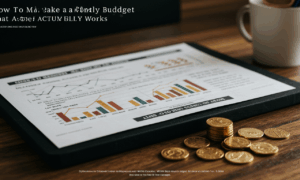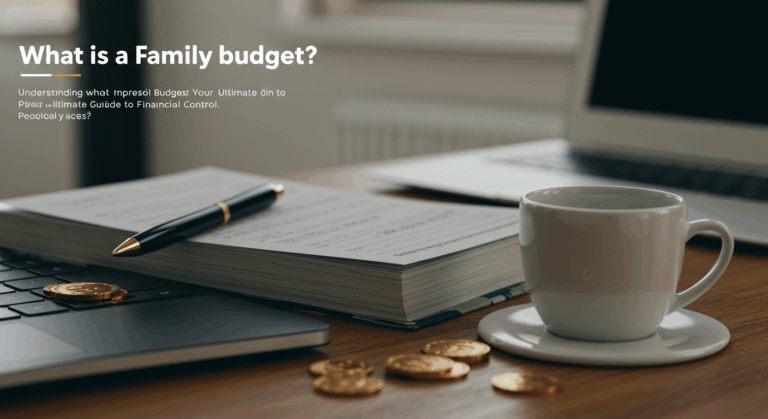Ready to Take Control of Your Spending? The Envelope System Might Be Your Secret Weapon
Are you ever mystified at the end of the month, wondering where all your money went? In an age of tapping cards and one-click online purchases, it’s incredibly easy to lose track of your spending. The money flows out of your account so frictionlessly that you barely notice it’s gone until it’s too late. If this sounds familiar, it might be time to embrace a classic, hands-on budgeting method that’s making a major comeback: the Envelope System. This time-tested strategy, also known as cash stuffing, is a brilliantly simple way to regain control over your finances, enforce spending limits, and start building a healthier relationship with your money.
This article will provide a comprehensive guide to understanding and implementing the Envelope System. We’ll explore what it is, how to set it up step-by-step, its powerful advantages, and how you can adapt this cash-centric method for our increasingly digital world.
What Exactly Is the Envelope System?
At its core, the Envelope System is a visual and tangible budgeting method designed to manage your variable expenses. The concept is straightforward: you allocate a specific amount of cash for different spending categories each pay period, and you place that cash into labeled envelopes. Once the money in an envelope is gone, you cannot spend any more in that category until the next pay period. There’s no swiping a card and hoping for the best; the physical emptiness of the envelope is a hard, non-negotiable stop sign.
This system works best for categories where your spending tends to fluctuate and where you’re prone to overspending. These are your variable expenses, such as:
- Groceries
- Dining Out & Takeout
- Gasoline or Transportation
- Entertainment (movies, concerts, etc.)
- Personal Care (haircuts, toiletries)
- Clothing
- Hobbies
It’s important to note that this system is not typically used for fixed expenses like your rent/mortgage, utility bills, or insurance premiums. Those are usually paid directly from your bank account and have consistent amounts. The real power of the Envelope System is in taming the day-to-day spending that often derails a budget.
How to Get Started: Your 4-Step Guide to Success
Implementing the Envelope System is simple, but it requires a bit of prep work to be effective. Follow these steps to set yourself up for financial success.
- Track Your Spending and Create a Budget: You can’t know how much to put in each envelope without understanding your current spending habits. For one month, track every single dollar you spend. Use an app, a notebook, or your bank statements. This will give you a realistic picture of where your money is going. Based on this, create a monthly budget that outlines your income, fixed expenses, and goals for your variable spending categories.
- Choose Your Categories and Label Your Envelopes: Based on your budget, decide which variable spending categories you want to control with cash. Get some plain envelopes and clearly label each one (e.g., “Groceries,” “Gas,” “Fun Money”). Be as specific or as broad as you need to be. Some people have a dozen envelopes, while others start with just three or four of their biggest “problem” categories.
- Withdraw Cash and Stuff Your Envelopes: This is the crucial step. After you get paid, head to the bank and withdraw the total amount of cash needed for all your envelopes for that pay period. For instance, if your budget allocates $400 for groceries, $100 for gas, and $150 for entertainment for the month, you would withdraw $650. Go home and physically place the correct amount of cash into each corresponding envelope.
- Spend Only from the Envelopes: From this point forward, whenever you go grocery shopping, you take the “Groceries” envelope with you. When you pay, you use the cash inside. The same goes for every other category. This creates a powerful psychological connection; you physically see your money decreasing, which makes you a much more conscious consumer. If an envelope runs out of money, your spending in that category must stop until the next month. No borrowing from other envelopes! That defeats the purpose of setting firm limits.

The Pros and Cons: A Balanced Perspective
Like any financial tool, the Envelope System has significant benefits but also some potential drawbacks. It’s important to understand both to determine if it’s the right fit for your lifestyle.
The Advantages:
- Promotes Financial Discipline: The system’s main strength is its ability to force you to be mindful. You can’t mindlessly overspend when you have a finite amount of physical cash.
- Extremely Visual and Tangible: Seeing a dwindling stack of bills is far more impactful than seeing numbers on a screen. This makes your budget feel real and urgent.
- Prevents Debt and Overdrafts: It’s impossible to spend money you don’t have when using cash. This is a fantastic way to break the cycle of credit card debt or avoid costly bank overdraft fees.
- Simplicity: At its core, this is a low-tech system that anyone can understand and implement without needing complex software or apps. For more ideas on simple financial strategies, you can explore our Savings section.
The Disadvantages:
- Inconvenience and Safety: Carrying large amounts of cash can feel unsafe or be cumbersome. You also need to make regular trips to the bank.
- Doesn’t Work for Online Purchases: This is the biggest challenge in the modern world. The traditional cash system isn’t practical for online shopping, subscriptions, or bills paid online.
- No Credit Card Rewards: By using cash, you miss out on potential benefits like cashback, travel points, or purchase protection offered by credit cards.
Modernizing the Envelope System for a Digital World
Worried about the cash-only limitations? Don’t be. You can absolutely adapt the principles of the Envelope System for a more digital lifestyle. Here are a few popular methods:
- Use Digital Budgeting Apps: Apps like YNAB (You Need A Budget) or Goodbudget are built around the concept of “digital envelopes.” You assign every dollar of your income to a specific category, and the app tracks your spending from your linked bank accounts, showing you how much is “left” in each digital envelope.
- Leverage Multiple Bank Accounts: Open several free checking or savings accounts and nickname them according to your spending categories (e.g., “Groceries Account,” “Entertainment Fund”). When you get paid, automatically transfer the budgeted amounts into each respective account and use the debit card associated with that account for those purchases only.
- The Hybrid Approach: You don’t have to go all-or-nothing. Use physical cash envelopes for the categories where you overspend the most, like dining out or personal shopping. Continue to use your debit or credit card for essentials like gas and online bills. This gives you the best of both worlds.
Ultimately, the Envelope System is a powerful tool for behavioral change. It’s about building awareness and imposing the discipline needed to align your spending with your financial goals. Whether you use physical cash or a digital adaptation, the underlying principle of giving every dollar a job is a cornerstone of sound personal finance.
Disclaimer: This article is for informational and educational purposes only and should not be considered financial or investment advice. The goal is to provide you with tools and strategies for managing your personal finances. For long-term goals like retirement, you may want to explore different investment options after consulting with a qualified professional.
Frequently Asked Questions (FAQ)
Q: What should I do if I have an emergency and need money, but the correct envelope is empty?
A: This is where an emergency fund is crucial. The Envelope System is for your planned, discretionary spending. A separate, dedicated emergency fund (typically 3-6 months of living expenses) should be kept in a high-yield savings account for true emergencies, like a car repair or medical bill. Avoid the temptation to “borrow” from your grocery envelope for a non-essential purchase. If you consistently run out of money in a certain category, it’s a sign that you may need to re-evaluate and adjust your budget allocations for the next month.
Q: Can the Envelope System help me pay off debt?
A: Absolutely. By gaining strict control over your variable spending, the Envelope System can help you “find” extra money in your budget that was previously being spent without a second thought. Once you’ve mastered the system for a month or two, you can identify surplus cash from your envelopes or areas where you can cut back. This freed-up money can then be directed as an extra payment toward high-interest debt, accelerating your journey to becoming debt-free.





